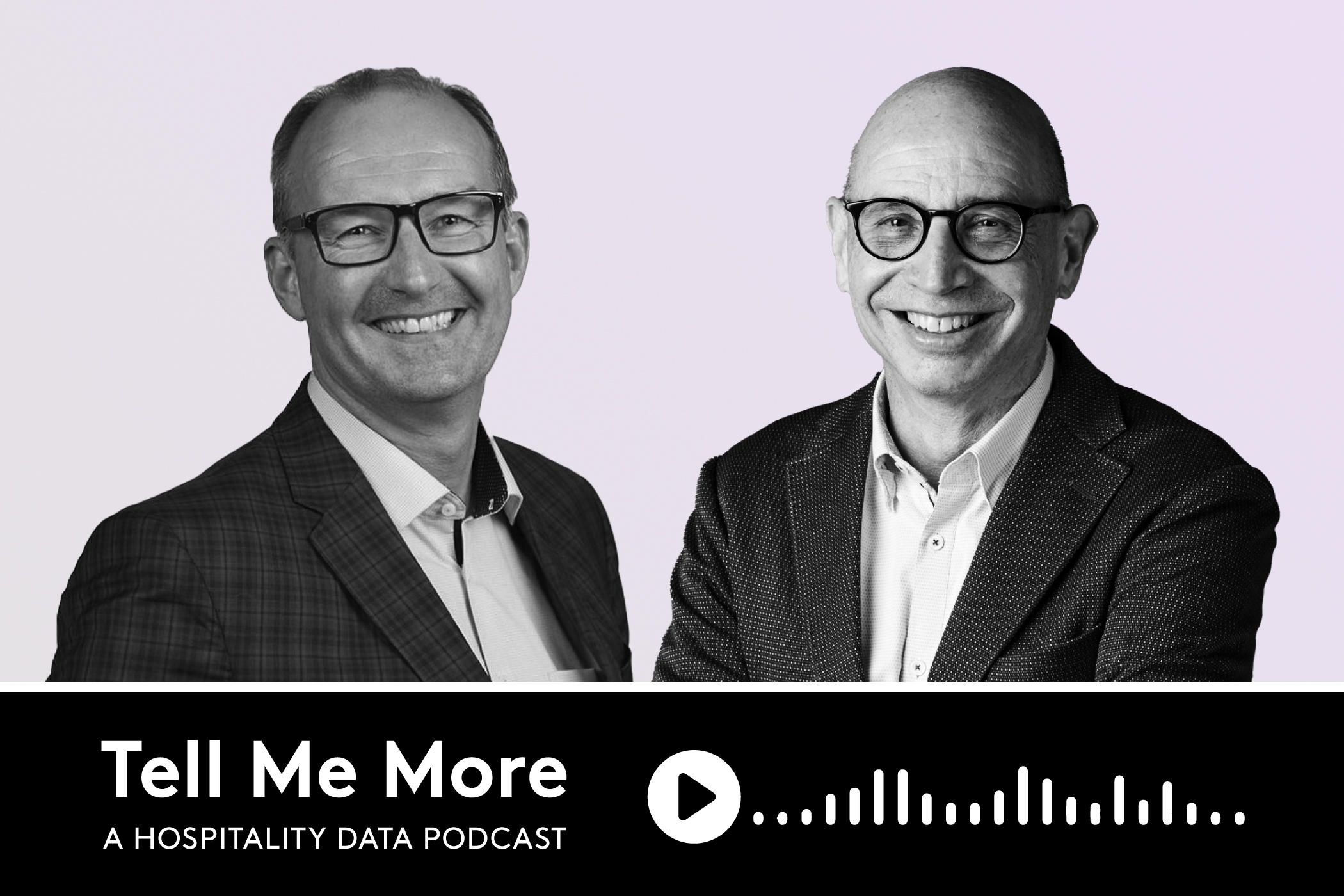Group business is back, business-transient demand is boosting hotel average daily rates and U.S. cities are enjoying their comeback.
In the latest episode of “Tell Me More: A Hospitality Data Podcast,” CoStar National Director of Hospitality Analytics Jan Freitag and STR Vice President of Analytics Isaac Collazo revel in the traditional high-performance period on the U.S. hotel industry calendar.
“We’re seeing pretty darn good occupancies and ADR growth, especially since September,” Collazo said. “We’re getting more of the traditional business traveler back, and more of the convention traveler.”
Freitag added that group room nights sold in September were only a little bit lower this year than in September 2019. That reinforces the idea of a more normal U.S. hotel trend line, where typically occupancy peaks before Halloween, then begins to dip through the end of the year.
“Isaac and I have a little side bet going: Is it possible that in October we sell more group rooms than we did in 2019?” Freitag joked. “Having the best group months ever? So stay tuned for that.”
The strong group and business-transient demand in recent months is why cities are benefiting.
“It has a lot to do with business,” Collazo said, citing CoStar data that shows more rooms have sold this year in the luxury, upper-upscale, upscale and upper-midscale hotel chain scales than in the second or third quarters of 2019.
He called the upscale and upper-midscale chain scales “the real bedrock for small- and medium-sized businesses.”
“Upper midscale has been selling more rooms than in 2019 since November of 2021, and upscale basically [has] since March of 2022,” he said.
But Freitag cautioned that even though several cities are enjoying strong revenue-per-available-room growth, those numbers aren’t necessarily back to 2019 levels.
“Boston RevPAR for September is up 7.7% and Washington, D.C., RevPAR is up almost 15%, but that does not mean we’re back to 2019,” he said. “This is just year over year.”
On the topic of a recession in the U.S., Freitag and Collazo continued their head vs. heart debate.
STR’s forecast still assumes a recession “because it’s the prudent thing to do,” Collazo said, adding that “in my heart, I just don’t see it.”
His personal take is that with jobs growth strong, especially in the professional sector, the hotel industry won’t feel much impact even in a technical recession.
STR’s forthcoming forecast includes “a slight upgrade,” Collazo said, thanks to better-than-expected third-quarter performance.
Freitag pushed back on sentiment a little, arguing that a prolonged high-interest-rate environment is driving the possibility of a recession, given the lack of credit availability.
“It’s very, very hard to get anything done, because it’s so expensive to borrow anything,” he said. “And I think corporations will start to curtail their spending, and that has implications up and down.”
In this episode, the pair also discuss:
- What impact a possible Choice Hotels International buy of Wyndham Hotels & Resorts might have on the economy and midscale chain scales.
- Theories on why the economy chain scale continues to lag.
- Early indicators of holiday demand in the U.S.
In this episode, we also refer to Episode 3: Let AI Be Your Co-Pilot.
The Hotel News Now Podcast Network brings timely audio interviews, industry opinion and analyst commentary about the global hotel industry to life. Find podcasts here or search for Hotel News Now on Apple, Spotify or wherever you listen.
Tell Me More: A Hospitality Data Podcast from the Hotel News Now Podcast Network is available to download on Apple or Spotify, where you can also subscribe to future podcast content.
Read more news on Hotel News Now.
